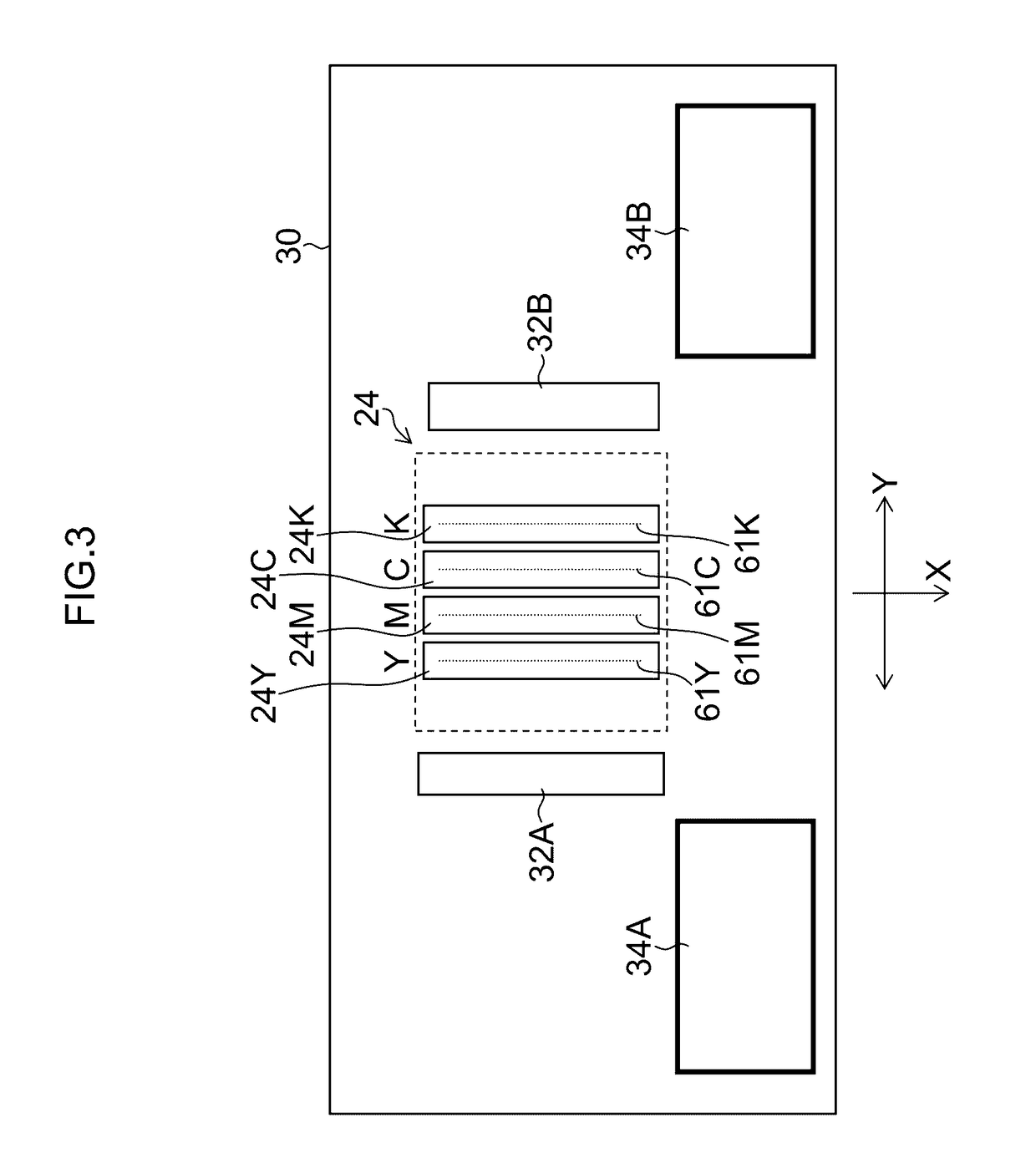Dither mask generation method and device
a mask and mask technology, applied in the field of dither mask generation methods and devices, can solve the problems of poor dispersion of dots, deterioration of distorted distribution of dots, etc., and achieve the effect of improving the graininess of dot arrangement and effectively suppressing banding
- Summary
- Abstract
- Description
- Claims
- Application Information
AI Technical Summary
Benefits of technology
Problems solved by technology
Method used
Image
Examples
second embodiment
Modification 5 of Second Embodiment
[0324]For a definition of the input reflecting low-pass dot arrangement image, the case of defining it by “difference” by the subtraction like the expression (9) and the expression (11) and the case of defining it by “quotient” by the division like the expression (10) and the expression (12) are described, however, the subtraction can be also handled as addition of a negative value and the division can be handled as multiplication of a fraction. Therefore, under such equivalent handling, the difference by the subtraction can be noted as “sum” by the addition, and the quotient by the division can be noted as “product” by the multiplication.
[0325]
[0326]In the first embodiment and the second embodiment described above, the case that there is only one nozzle ejection rate to be reflected in the generation of the dither mask respectively for the individual pixels of the dither mask is described. However, the case that there are the plurality of nozzle e...
third embodiment
[0362]The third embodiment is a form of coping with the mask shifting processing for the example described in the first embodiment.
[0363]FIG. 35 is a flowchart illustrating the dither mask generation method relating to the third embodiment. In FIG. 35, the same step numbers are attached to the processes same as or similar to that in the flowchart described in FIG. 9, and the description is omitted.
[0364]In FIG. 35, instead of step S14 in FIG. 9, a process of step S14A is adopted, and a process of step S15 is added further. Also, in FIG. 35, instead of the individual processes of steps S18, S20 and S24 in FIG. 9, processes of steps S18A, S20A and S24A are adopted.
[0365]In step S14A in FIG. 35, according to the scanning pattern and the shift setting condition of the dither mask, the nozzle numbers corresponding to the individual pixels of the dither mask are calculated at individual main scanning positions of the dither mask. Provided that, “individual main scanning positions” here me...
fourth embodiment
[0375]The fourth embodiment is a form of coping with the mask shifting processing for the example described in the second embodiment.
[0376]The dither mask generation method relating to the fourth embodiment is achieved by a combination of the flowchart illustrated in FIG. 35 and the flowchart of the second embodiment described in FIG. 22.
[0377]However, in step S106 of FIG. 22, the low-pass dot arrangement image is updated in the state of shifting the dot arrangement by the mask shift amount and arranging it. Since content of the other processes is already described, the description is omitted.
[0378]As described using FIG. 27 to FIG. 36, even in the case that the dither mask is shifted in the sub scanning direction and arranged, and there are the plurality of nozzle numbers corresponding to the individual pixels of the dither mask, the dither mask that can averagely control the nozzle ejection rate can be generated.
[0379]Without being limited to the case of shifting and arranging the...
PUM
 Login to View More
Login to View More Abstract
Description
Claims
Application Information
 Login to View More
Login to View More - R&D
- Intellectual Property
- Life Sciences
- Materials
- Tech Scout
- Unparalleled Data Quality
- Higher Quality Content
- 60% Fewer Hallucinations
Browse by: Latest US Patents, China's latest patents, Technical Efficacy Thesaurus, Application Domain, Technology Topic, Popular Technical Reports.
© 2025 PatSnap. All rights reserved.Legal|Privacy policy|Modern Slavery Act Transparency Statement|Sitemap|About US| Contact US: help@patsnap.com



